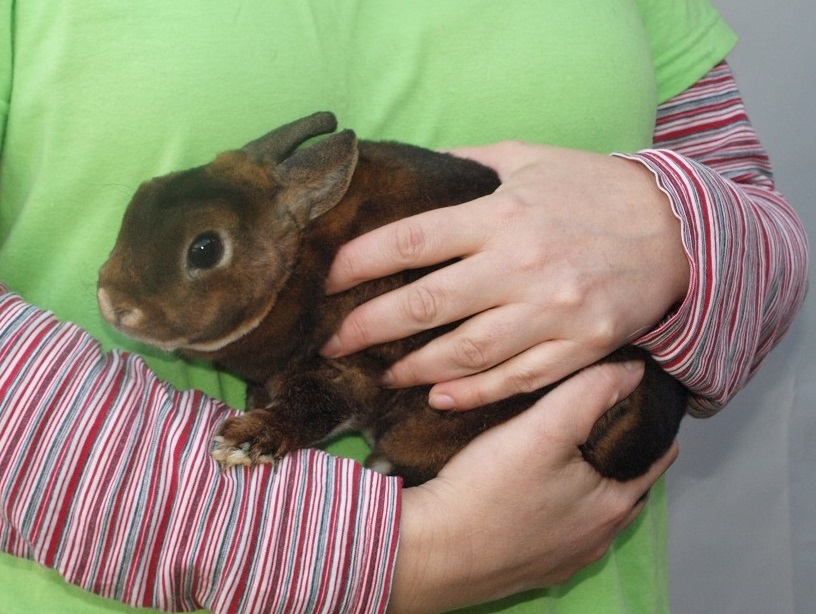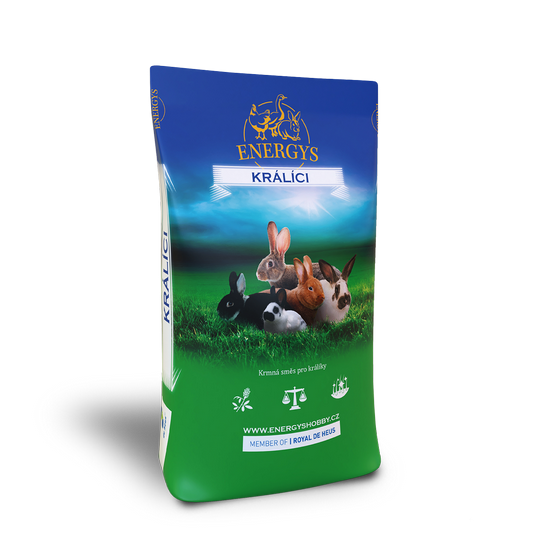Rabbits
Poultry
Laying hens
Quails
Guinea pigs
Pigs
Ostriches
Sheep and goats
Pigeons
Pheasants
Forest animals
How to Domesticate a Rabbit
A frequent topic, and indeed a standard requirement of budding pet rabbit breeders, is the suitability and ability of domesticating a new rabbit companion. Faculties for “friendliness” are partly innate and partly influenced by the external environment. When domesticating a rabbit, it is necessary to follow the recommended guidelines, as the stage of socialization at an early age has a significant influence on the behavior of the rabbit in adulthood.
Rabbits and temperament
From the point of view of the genetic foundation of temperament the influence of the breed plays a crucial role in rabbits. We know breeds with a fairly lively temperament (e.g. hare, ermines, Czech spotted rabbits, etc.), as well as amore phlegmatic gene pool (e.g. French rams, dwarf rams). No less important is the family tendency, as the behavior of rabbits is a relatively hereditary matter. One of the criteria for the purebred breeding of rabbits should (apart from health and exterior aspects) be a stabilizing selection of individuals with appropriate responses to the external environment and breeders.
Rabbit purchase options
From the point of view of pet breeds of rabbits, the most preferred are dwarf rabbits in the Czech Republic. There are multiple sources to secure your rabbit from. The biggest guarantee is provided by the purchase from a breeder organized in the Czech Breeders Association. Such a breeder usually offers a standardized rabbit with a different fur color than required by the standard (e.g. black rabbit with a white spot on his nose). But even such a rabbit can provide a person with great joy as a companion. The advantage is that we see the parents of the rabbit, the environment and the right breeder will give us advice.

It is less advantageous to buy from a specialized pet store where mainly dwarf rabbits are offered; purebred rabbits with pedigrees are offered only sporadically. The least suitable alternative is buying through an advertisement where one cannot see the animal being bought. One possibility is to buy a rabbit from the animal shelter. However, such rabbits are older and mostly have poor contact with humans and taming them is more problematic.
Transport to a new home
For transportation, it is best to choose either a special plastic box (known for the transport of cats or small dogs) or an ordinary, but strong cardboard box with sufficiently secure ventilation. It is suitable to lay bedding and hay on the bottom.
First phase – resting
The young rabbit must be housed in a cage on arrival. Prepare the cage for the rabbit before it arrives. Provide the rabbit with plenty of water and hay / straw. It is not necessary to provide grain feed on the first day. It is recommended to cover the cage with a towel to create half-light which the rabbits like. Of course there is a sleep mode, at least the first three days. During the second day at the latest, the rabbit should start to feed and drink, and he should also start to defecate regularly.
Second phase – touch
The first week after arrival can be marked for a critical period. Most rabbits, however, manage it well. After about a week, the rabbits can gradually get used to direct human contact – touch. Stroking the rabbit during or after feeding seems to be the best. Pet the rabbit on the back rather than on the head; some rabbits don’t like being touched on the head. Perform this phase several times a day, always speaking to the rabbit in a calm way and avoiding abrupt movements.
The third phase – movement
Approximately 2 – 3 weeks after arrival, it is advisable to take the bunny out of the cage and caress it on your lap. Rabbits like stereotype and become accustomed to the owners coming from work and look forward to being pet. In the case that you have a room secured, you can even briefly let the rabbit roam free. However, the free movement of the rabbit should always be controlled, and for a maximum of 1-2 hours per day. This is enough time for physical activity and exercise outside the cage. Most pet rabbits can learn their name, although it is more difficult than with dogs and cats.
Best rabbit age
The most appropriate age for taking a rabbit is 7 – 10 weeks , depending on its development. The phase of socialization with people is best realized by the 3rd to 4th month of the rabbit age. At this age, we have to treat the rabbit calmly and teach it to play and other domestication techniques. Older rabbits are less adaptable to domestication, but there is considerable individual variability.
Related posts
10. April 2024
Keeping dwarf rabbits as pets is becoming increasingly popular. It does not require a lot of space and is ideal for people who live in smaller homes or apartments. Dwarf rabbits are also very friendly, so it’s no wonder that people are choosing them for this purpose more and more often. As with all animals,…
30. August 2022
In this article we will discuss several rabbit diseases – ear scab, tyzzer’s disease and heat stress.
24. August 2022
In this article we look at two diseases – e.Coli and enterocolitis.
2. August 2022
In this article we look at two common rabbit diseases, myxomatosis and infectious rhinitis.
13. July 2022
In the following article we will discuss rabbit plague – rhd or vhd (viral haemorrhagic disease of rabbits).
Related products

RABBIT DWART
Complete pelleted feed for dwarf rabbits with high digestibility. It contains a high proportion of fibre (high alfalfa and grass cake content) and a reduced sugar and starch content. Contains flaxseed, which has a positive effect on coat quality. Suitable for daily feeding. We recommend providing rabbits with safe fresh water and hay.

RABBIT CHAMPION
Feed for show rabbits, does not include Coccidiostat. A unique mix significantly supports the quality and growth of fur. Serve when moulting and at least two months before the start of the show season.

RABBIT GOLD FORTE
A premium feed mix in an ideal make up for gestating and breast feeding females. For the intensive fattening of rabbits for a period of up to 5 days before slaughter. It supports fast growth, meat content and an excellent state of health. It contains a coccidiostat which lowers the risk of mortality.

RABBIT KLASIK FORTE
Intended for the fattening of rabbits up to a point at least 5 days before slaughter. Suitable for attaining a high meat content and an excellent state of health. Thanks to its Coccidiostat content it lowers the animals mortality.

RABBIT KLASIK
For the final phase of rabbit fattening, a minimum of 5 days before slaughter. It supports high meat content and excellent taste qualities in rabbit meat. Without a coccidiostat.

RABBIT START
For young rabbits from the start of accepting feed to 4-6 weeks after weaning. The feed helps to significantly lower the death rate in the period around weaning. It contains a raised percentage of fibre and less starch. It does not contain a coccidiostat.
